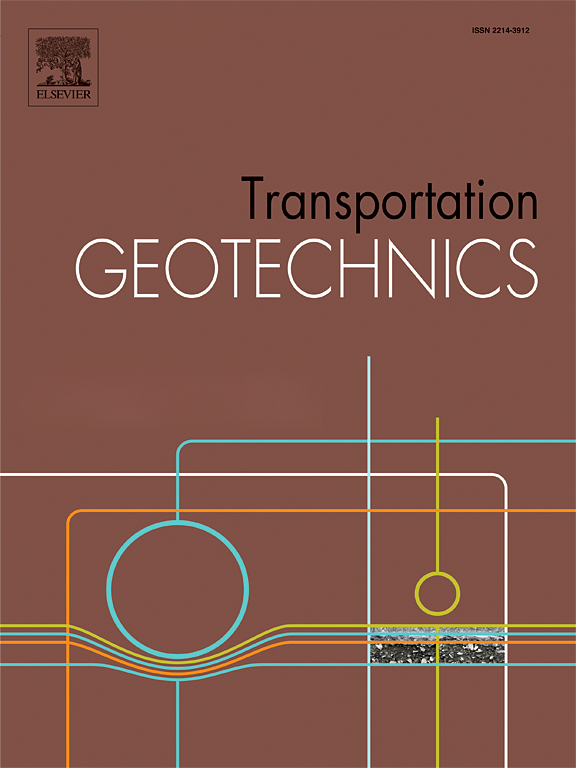An experimental investigation on the arching effect of cohesive materials in trapdoor tests
IF 4.9
2区 工程技术
Q1 ENGINEERING, CIVIL
引用次数: 0
Abstract
This study conducted a series of trapdoor tests on low cohesion material at different buried depths, the failure patterns and the variations of soil pressure were investigated, and the development of the arching effect in trapdoor tests was analyzed. The results showed two failure models for soils: when the buried depth ratio was smaller than 2, two rupture surfaces developed obliquely upward from two sides of the trapdoor and merged into one triangular rupture surface; when the ratio was greater than 2, two rupture surfaces developed vertically upward and merged into one tower-shaped rupture surface. As the burial depth increased, the inner boundaries of the soil arch moved upward, and the widths of the inner and outer boundaries expanded. Furthermore, the maximum arching trajectory, obtained by connecting the maximum tangential stress points, was closer to the inner boundary and shifted towards the outer boundary when the trapdoor was lowered. Based on the experimental results, a new composite arch model was proposed to calculate the soil pressure above a trapdoor, it can better describe the development of soil pressure in a trapdoor test.
活门试验中粘性材料拱起效应的实验研究
本研究对不同埋深的低内聚力材料进行了一系列活门试验,研究了其破坏模式和土压力的变化,并分析了活门试验中拱起效应的发展。结果表明土壤有两种破坏模式:当埋深比小于 2 时,两个破裂面从活门两侧斜向上发展,合并成一个三角形破裂面;当埋深比大于 2 时,两个破裂面垂直向上发展,合并成一个塔形破裂面。随着埋深的增加,土拱的内边界上移,内外边界的宽度扩大。此外,连接最大切向应力点得到的最大拱起轨迹更靠近内边界,而当活门下降时则向外边界移动。根据试验结果,提出了一种新的复合拱模型来计算活门上方的土压力,它能更好地描述活门试验中土压力的发展。
本文章由计算机程序翻译,如有差异,请以英文原文为准。
求助全文
约1分钟内获得全文
求助全文
来源期刊

Transportation Geotechnics
Social Sciences-Transportation
CiteScore
8.10
自引率
11.30%
发文量
194
审稿时长
51 days
期刊介绍:
Transportation Geotechnics is a journal dedicated to publishing high-quality, theoretical, and applied papers that cover all facets of geotechnics for transportation infrastructure such as roads, highways, railways, underground railways, airfields, and waterways. The journal places a special emphasis on case studies that present original work relevant to the sustainable construction of transportation infrastructure. The scope of topics it addresses includes the geotechnical properties of geomaterials for sustainable and rational design and construction, the behavior of compacted and stabilized geomaterials, the use of geosynthetics and reinforcement in constructed layers and interlayers, ground improvement and slope stability for transportation infrastructures, compaction technology and management, maintenance technology, the impact of climate, embankments for highways and high-speed trains, transition zones, dredging, underwater geotechnics for infrastructure purposes, and the modeling of multi-layered structures and supporting ground under dynamic and repeated loads.
 求助内容:
求助内容: 应助结果提醒方式:
应助结果提醒方式:


